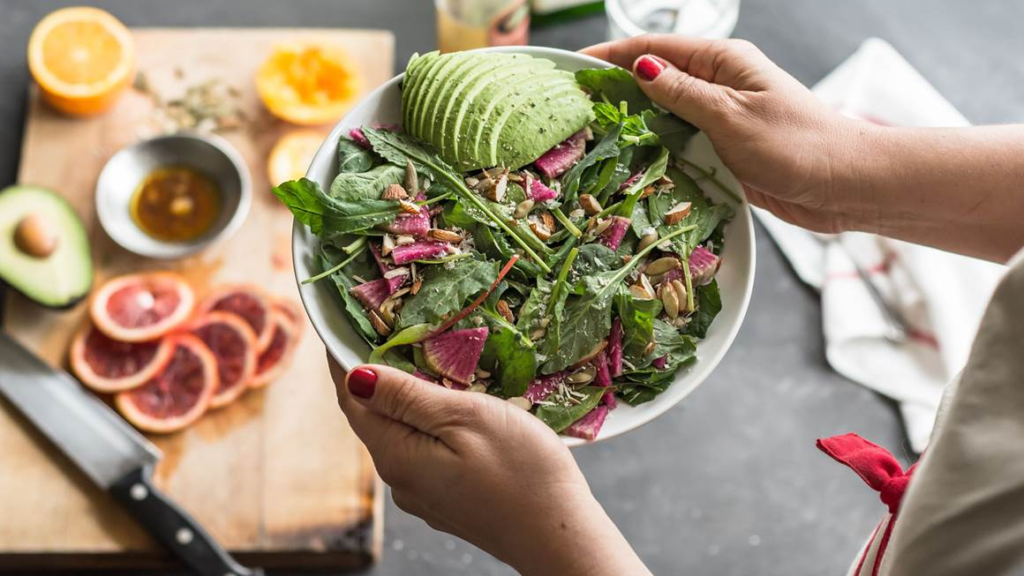Consumption of a healthy diet has been scientifically proven to reduce the risk of several diseases and to keep our body and mind healthy. This new year, we urge you to take a resolution to start eating a balanced healthy diet and sustain it for life. As a dietician focusing on improving peoples’ cardiovascular health, I would like to share some of the food-related behaviour patterns I come across frequently and some simple solutions to help you acquire a heart-healthy eating habit.
Pattern 1 – Lacks awareness and is resistant to change
These individuals do not include adequate amounts of fruits and vegetables on a daily basis mainly because they are ignorant about the importance of a balanced diet. Moreover, they are likely to consume packaged foods and eat out very often, which makes things worse when it comes to behaviour modification.
Mr. SC, an entrepreneur in his 50s was recently operated for a heart attack and is currently undergoing cardiac rehabilitation with us. Apart from his smoking habit, which he quit after the heart attack and his high BP that has come under control now, his unhealthy dietary behaviour has been and continues to be the main risk factor for his cardiac condition. He has been habitually consuming unhealthy foods like wafers, sweets, savouries and carbonated drinks on a regular basis, and does not include vegetables and fruits in his daily diet.
Solution – Fruits and vegetables are low in calories and are nutrient dense; in other words, they are packed with vitamins, minerals, antioxidants and fibre. Plain salads and plain steamed veggies can quickly become boring; there are plenty of ways to add taste to your vegetable dishes. Some healthy cooking methods such as boiling, steaming, grilling, roasting, or pan frying enhances the taste of the vegetables. Naturally sweet vegetables such as carrots, beets, sweet potatoes and peppers add sweetness to your meals and reduce food cravings. Bringing in variety to your menu in the form of mixed vegetable soups or a stew, veggie gravy or a raita, vegetables cooked with dhal and garnished with shredded coconuts and peanut crumbs etc. would enhance the palatability of your dishes. Similarly, getting creative with your salads, experimenting with different combinations of fruits and going local when it comes to farm produce are ideal ways to spruce up your fibre intake.

Mr. SC has understood that his diet has been unhealthy all along but it has been very challenging for him to incorporate the recommended 4-5 portions of veggies and fruits daily. We have succeeded in bringing down his intake of empty calories (carbonated drinks) and packaged snacks but he has troublesome cravings as he as been addicted to unhealthy foods. In fact, he did not find quitting smoking as difficult as adopting a heart-healthy diet but is making slow and steady progress and is sure to achieve all dietary goals during his rehab program.
Pattern 2 – Focused on fitness but consumes an improper diet
Some of us are health conscious and know that we need to exercise regularly to stay fit and healthy. In fact, we believe we are improving our health by over-exercising and cutting down some dietary components like healthy fats to a dangerously low level or consuming too much protein-rich foods which in turn throws the dietary balance away and affects our health negatively.
Mr. R aged 51 years has been an avid exerciser for over 20 years focusing on power lifting (lifting heavy weights), and has been consuming a calorie-dense diet and multiple protein supplements. He recently suffered a heart attack, underwent an angioplasty procedure and is currently receiving cardiac rehabilitation. His main concerns were whether he could return to power lifting and whether his cardiac condition will have long-term effects on his overall fitness.

Solution – Over consumption of any particular nutrient can cause adverse effects. The daily requirement of different nutrients varies according to age, gender, body composition and level of physical activity. The ideal way to improve your diet is by focusing on the nutrients in your diet and not on the calories, that is, count the nutrients and not the calories. In many instances, the vitamins and minerals found in food sources are better utilised by our body than those in commercially available capsules and powders. Eating healthily gives far greater benefits than opting for supplements and eating poorly. A healthy balanced diet with sufficient fruits and vegetables, whole grains, healthy fats and lean meats along with some naturally available seeds and nuts helps to prevent nutritional deficiencies and fulfils our dietary requirements.
Pattern 3 – Follows multiple fad diets and loses health
A fad diet is a diet that is popular for a time without being a standard dietary recommendation, and often promising unreasonably fast weight loss or nonsensical health improvements. Some of us tend to follow multiple fad diets with the hope of getting magical results in a short period of time and unfortunately end up losing our health in the process.
Mrs. DD, a home maker aged 44 years, had tried the paleo diet (high protein low carbohydrate diet), keto diet (high fat diet) and a few other diets in the past but ended up gaining rather than losing weight and becoming hypertensive. The pattern we noticed was she would follow a particular diet for 2-3 months and move onto another diet plan when results were not as expected, without incorporating a regular exercise regimen and making healthy lifestyle changes.

Solution – Some disease conditions may alter our nutrient requirements, but otherwise we all need a balance of proteins, fats, carbohydrates, fibre, vitamins, and minerals in our diet to sustain a healthy body. Instead of eliminating certain food groups from your diet, selecting the healthiest options from each category is the better thing to do. A combination of a balanced healthy diet with proper intake of recommended nutrients, sufficient exercise, good sleep and adequate stress management helps to maintain a normal weight in the long term whereas crash diets may reduce the body weight temporarily mainly by loss of muscle mass rather than loss of stored body fat and is therefore extremely unhealthy.
Making the switch to a healthy diet
Switching to a healthy diet doesn’t have to be complicated. You need not completely eliminate foods you enjoy, and you don’t have to change everything overnight. A better approach is to make few small changes at a time. Keeping your goals simple will help achieve more in the long term without feeling overwhelmed by a major diet. Think of planning a healthy diet as a number of small, manageable steps like adding a salad to your diet once a day, reducing your intake of hidden salt present in packaged foods and cutting down added sugar, one change per week. Once these small changes become a habit, you can continue to add more healthy choices. When cutting back on unhealthy foods in your diet, it’s important to replace them with healthy alternatives.
A healthy eating plan should include
- A variety of vegetables from all of the subgroups like dark green, red and orange, legumes (beans and peas), starchy, and other leafy vegetables
- Fruits, especially whole fruits which are are superior to fruit juices
- Choose whole grains instead of refined ones (e.g. whole grain bread instead of white bread)
- Fat-free or low-fat dairy, including low-fat milk, yogurt, cheese, and/or fortified soy beverages
- A variety of protein foods, including seafood, lean meats and poultry, eggs, legumes (beans and peas), nuts, seeds, and soy products
- Steam or shallow fry instead of deep fry
Some tips to ensure a balanced wholesome diet
- Try at least one new healthy recipe per week
- Try to eat a family meal everyday to help you focus on eating healthy meals
- Pack a healthy lunch with some healthy in-between fillers like nuts and fruits for work. This lets you have more control over what you eat.
- Eat breakfast, and eat smaller meals throughout the day. A healthy breakfast can jumpstart your metabolism, while eating small, healthy meals keeps your energy up all day.
- Avoid eating late at night. Try to eat dinner earlier and fast for 14-16 hours until breakfast the next morning. Studies suggest that eating only when you’re most active and giving your digestive system a long break each day may help to regulate weight.
Shortcuts might help you achieve temporary results, but focusing on sustainable healthy changes will help you maintain good health for decades. Feel free to take professional help if you’re not sure where to start or how to help a loved one with nutritional challenges. After all, we are what we eat and eating healthy is an art that once learnt will go a long way in keeping you healthy and happy!